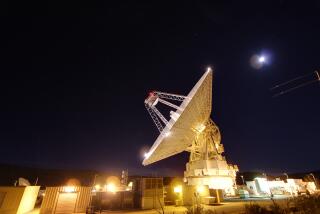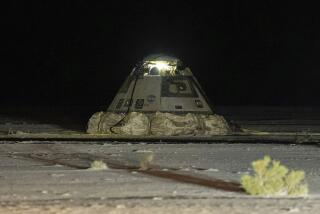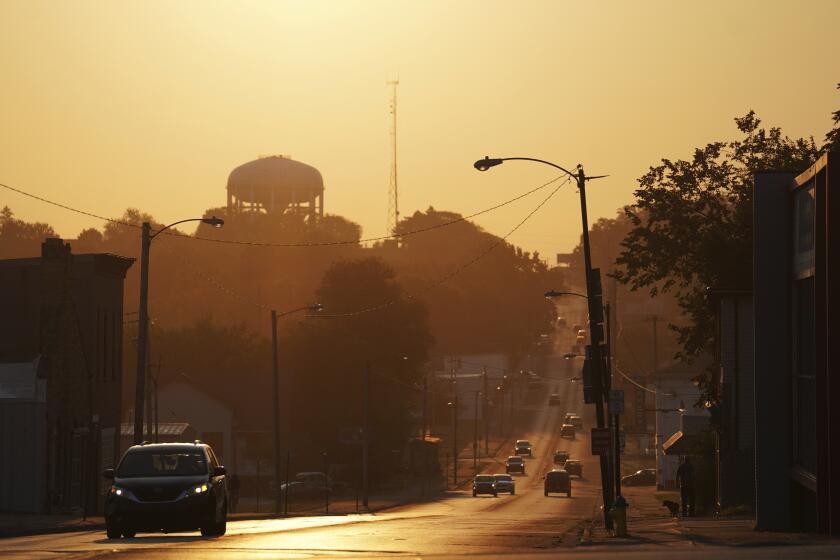Astronauts risk blurred vision after months in space
If NASA ever wants to send astronauts to Mars, it first must solve a problem that has nothing to do with rockets or radiation exposure.
A newly discovered eye condition found to erode the vision of some astronauts who have spent months aboard the International Space Station has doctors worried that future explorers could go blind by the end of long missions, such as a multiyear trip to Mars.
Although blindness is the worst-case scenario, the threat of blurred vision is enough that NASA has asked scores of researchers to study the issue and has put special eyeglasses on the space station to help those affected.
“We are certainly treating this with a great deal of respect,” said Dr. Richard Williams, NASA’s chief health and medical officer. “This [eye condition] is comparable to the other risks like bone demineralization [loss] and radiation that we have to consider.... It does have the potential for causing mission impact.”
According to one NASA survey of about 300 astronauts, nearly 30% of those who have flown on space shuttle missions — which usually lasted two weeks — and 60% who have completed six-month shifts aboard the station reported a gradual blurring of eyesight.
Williams put the figure lower — about 35% for station crew members — but did not dispute the severity of the problem, nor the mystery surrounding it. The disorder, similar to a condition called papilledema, is thought to be caused by increased spinal-fluid pressure on the head and eyes due to microgravity, although the exact cause is uncertain.
Oftentimes, the problem goes away once an astronaut returns to Earth. But a recent study by the National Academies notes there had been “some lingering substantial effects on vision,” and that astronauts were “not always able to requalify for subsequent flights,” at least not immediately.
Williams declined to discuss specific cases but acknowledged at least one astronaut never regained normal vision.
Though it will be years before NASA has a rocket powerful enough to launch humans to Mars, the agency has long worried about the effects on astronauts of the nearly 3-year-long round trip. But the chief worry has been exposure to cosmic radiation and, to a lesser extent, loss of bone mass caused by microgravity.
For decades, though, NASA had also received anecdotal evidence of vision problems. The agency began studying the issue in earnest about 2005, when an unnamed astronaut came forward.
“You didn’t hear about it at all until you had one fellow come back [from space] and had problems and was very open about it. His openness led to other people reporting the same,” said Garrett Reisman, a former astronaut who spent three months aboard the station in 2008.
Much of the research so far has centered on seven unnamed astronauts who have shown symptoms, including one astronaut whose eyesight was so affected by his third month on the station that he could “only see the Earth clearly while looking through the lower portion of his progressive reading glasses,” according to a draft of a paper to appear in the medical journal Ophthalmology.
“No one has been in space long enough to know how bad this papilledema can get,” said Dr. Bruce Ehni, a neurosurgeon at Baylor College of Medicine, who has worked with NASA on this issue.
On Earth, papilledema can lead to blindness if left unchecked, which is why Ehni said solving the issue was paramount for the space community.
When NASA begins trips to long-distance destinations such as Mars, “you can’t end up having a bunch of blind astronauts,” he said.
More to Read
Sign up for Essential California
The most important California stories and recommendations in your inbox every morning.
You may occasionally receive promotional content from the Los Angeles Times.










